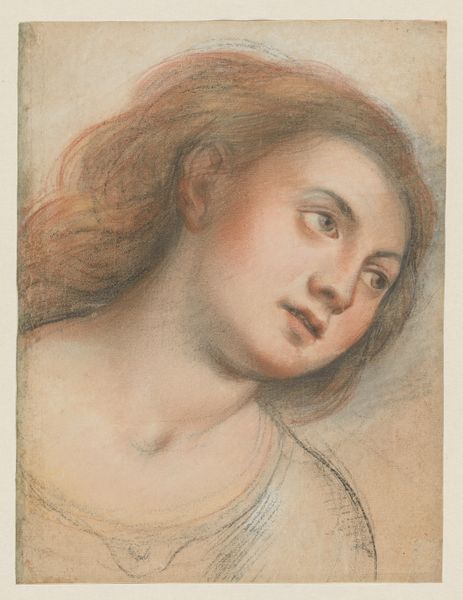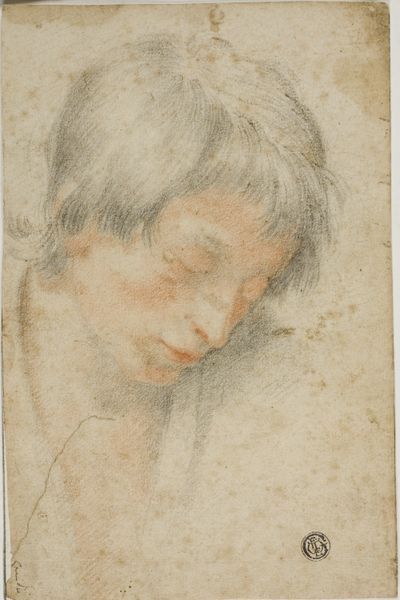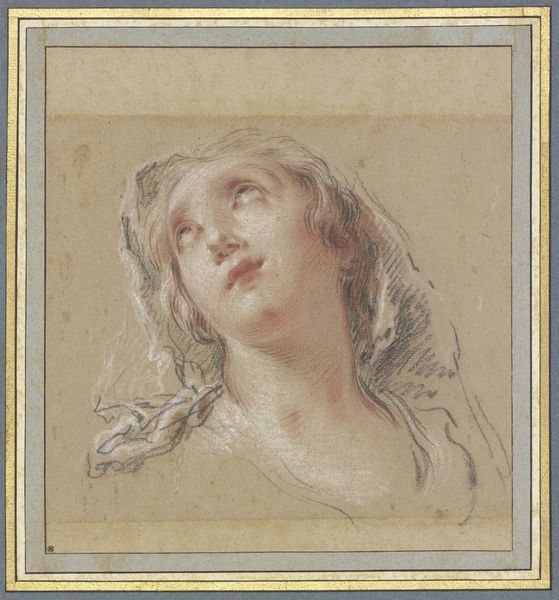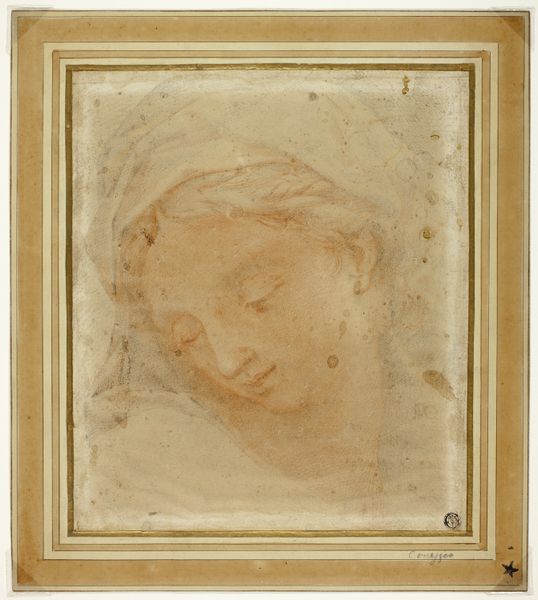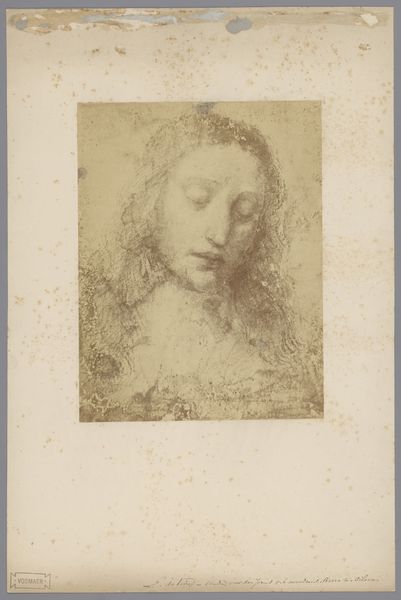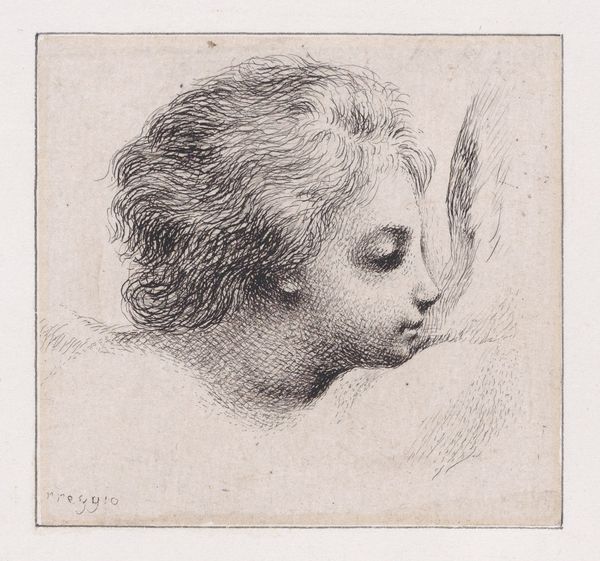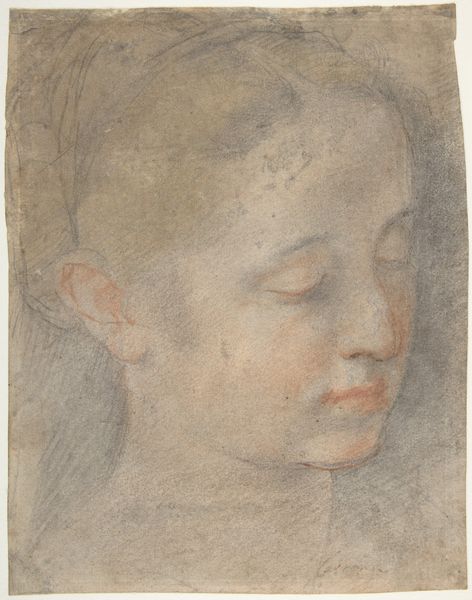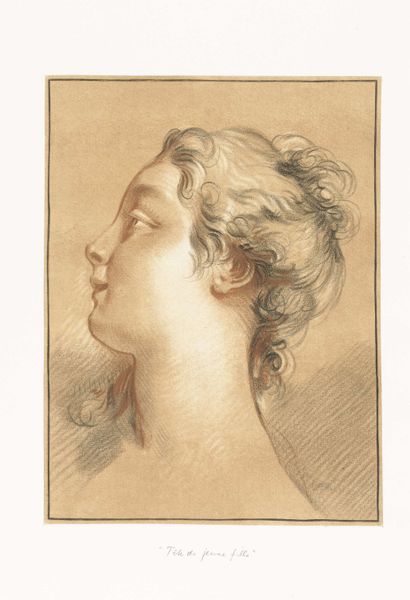
drawing, coloured-pencil, paper, pencil
#
portrait
#
drawing
#
coloured-pencil
#
baroque
#
paper
#
pencil
#
italian-renaissance
#
watercolor
Dimensions: 168 mm (height) x 145 mm (width) (bladmaal)
Curator: Well, just look at him, drifting somewhere far away. It feels like peering into someone's most intimate dreamscape. Editor: This drawing, entitled "The Head of a Young Man with Closed Eyes," comes to us from the hand of Francesco Furini. Created sometime between 1603 and 1646, it's a Baroque portrait rendered in pencil and colored pencil on paper. What strikes me most is its delicate rendering; the face emerges softly from the background. Curator: Soft is definitely the word. The colours are like whispers. There's something incredibly vulnerable in those closed eyes. You almost feel like you're intruding on a private moment. Do you feel that intimacy too, or is it just me being overly sensitive, as usual? Editor: No, not at all. The choice of drawing as a medium heightens that sense of intimacy. Unlike the grand gestures we often associate with Baroque painting, a drawing suggests immediacy, a private study almost. But it is interesting how the Italian Renaissance lingers here, as the idealized beauty and smooth, flowing lines still capture Renaissance ideals even as the dynamism of Baroque portraiture is embraced. Curator: The way the light caresses his face makes me think about the act of seeing, or rather, not seeing. He's turned inward, completely unaware of us observing him centuries later. Editor: The portrait allows access. I wonder, what was the intention? Was this preparatory for a larger painting, or perhaps a private meditation on youth and beauty? The Statens Museum for Kunst holding onto this work gives access to Furini, his skill, and, yes, intimacy to a large public audience. Curator: Maybe it was just a moment, you know? A fleeting feeling Furini had to capture. Thank you for pulling apart what makes this head really shine, I was in danger of losing myself. Editor: It's in holding the personal up against cultural understanding where we really bring context and the politics of imagery together.
Comments
No comments
Be the first to comment and join the conversation on the ultimate creative platform.
